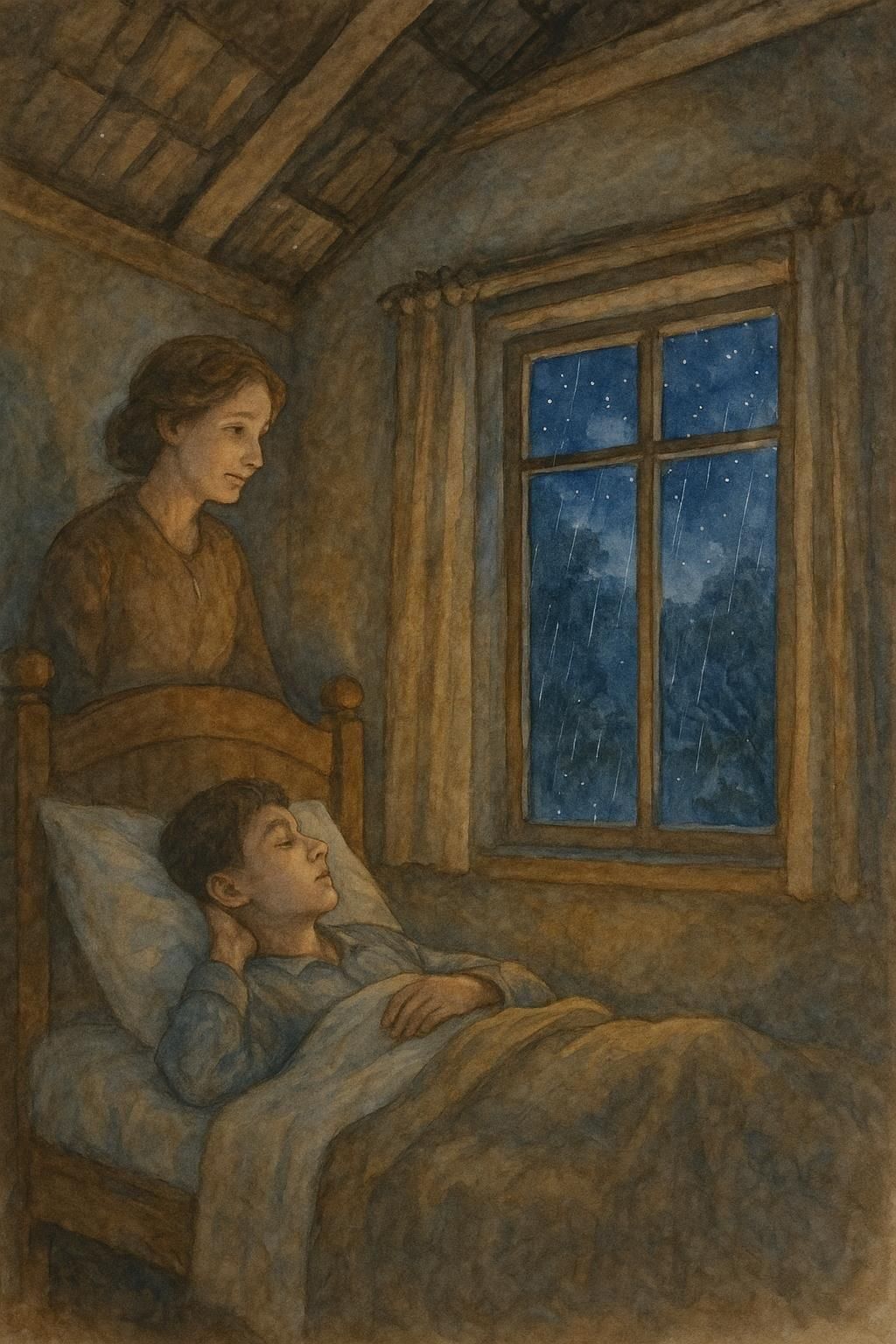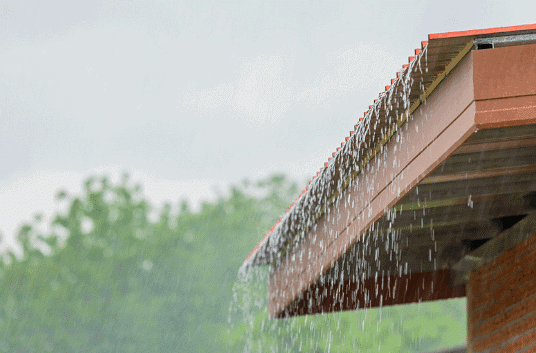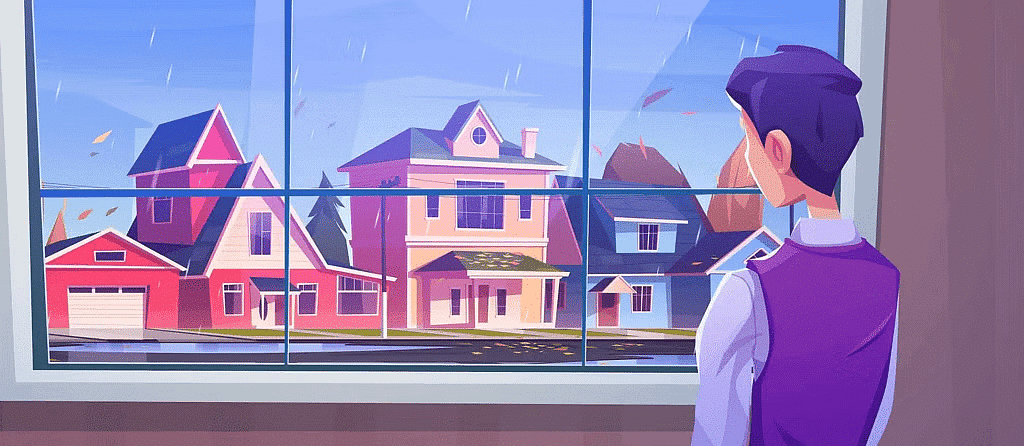Rain on the Roof Summary Class 9 English Beehive Chapter 3
| Table of contents |

|
| Introduction |

|
| Detailed summary |

|
| Theme/Message of the Poem |

|
| Useful Expressions |

|
| Glossary |

|
Introduction
The poem ‘Rain on the Roof’ talks about the poet’s varied reactions to the sound of raindrops falling on the roof of his house. He says that the raindrops at night are like tears shed by the sad, dark night.
 He loves to lie in bed and hear the rain falling on the roof of his room because it brings back sweet memories of the past. He says that the sound of raindrops helps him fall asleep and gives him sweet dreams. He has memories of his loving mother who would put them to sleep.
He loves to lie in bed and hear the rain falling on the roof of his room because it brings back sweet memories of the past. He says that the sound of raindrops helps him fall asleep and gives him sweet dreams. He has memories of his loving mother who would put them to sleep.
Detailed summary
In this poem, the poet describes the arrival of rain by depicting the movement of dark, moisture-laden clouds in the sky. The poet interprets these clouds as "humid shadows" and emphasizes their impending release of rain. The night sky, adorned with stars, serves as the backdrop for this atmospheric transformation.

When the humid shadows hover
Over all the starry spheres
And the melancholy darkness
Gently weeps in rainy tears,
What a bliss to press the pillow
Of a cottage-chamber bed
And lie listening to the patter
Of the soft rain overhead!
The poet metaphorically likens raindrops to tears, suggesting a profound connection between the weather and the poet's emotional perception. The notion of the dark sky weeping is reinforced, portraying a melancholic scene. Finding solace in this natural phenomenon, the poet views lying in bed during the rain as a comforting blessing, relishing the soothing sound of raindrops on the roof.
Every tinkle on the shingles
Has an echo in the heart;
And a thousand dreamy fancies Into busy being start,
And a thousand recollections
Weave their air-threads into woof,
As I listen to the patter
Of the rain upon the roof.
Transitioning to the next part, the poet expresses the emotional resonance he experiences when raindrops fall on his house's roof. Each sound, or "tinkle on the shingles," reverberates in his heart and becomes a part of his dreams. The poet's imagination is sparked by the rhythmic fall of raindrops, generating various fantastical images and evoking memories of the past.

Now in memory comes my mother,
As she used in years agone,
To regard the darling dreamers
Ere she left them till the dawn:
O! I feel her fond look on me
As I list to this refrain
Which is played upon the shingles
By the patter of the rain.
In the final paragraph, the poet introduces the theme of maternal nostalgia. Rain serves as a trigger for memories of his mother, who is no longer alive. Recollecting her love and care, the poet envisions his mother looking at him as he listens to the rain's song. The sound of raindrops becomes a poignant link between past and present, stirring deep emotions and leaving the poet profoundly moved. Each instance of rainfall rekindles memories of his mother, creating a bittersweet connection between the soothing sound of rain and the cherished moments of the past.
In conclusion, this evocative poem celebrates the joy of listening to raindrops on the roof. With vivid imagery and tender recollections, the poet weaves a timeless narrative that captures the blissful essence of a rainy night. The patter of rain becomes a poetic melody, echoing in the heart and summoning cherished memories, particularly that of the poet's mother. In its simplicity, the poem beautifully highlights the profound connection between nature, emotion, and enduring comfort.
Theme/Message of the Poem
Themes:
- Nostalgia: The poem explores the theme of nostalgia through the speaker's memories of their mother and past experiences.
- Comfort in Nature: Finding solace and comfort in the natural world, specifically in the sound of rain, is a prominent theme.

Message:
- The poem conveys the idea that simple, everyday experiences like listening to the rain can evoke deep emotions and memories.
- It emphasizes the importance of finding solace and peace in the midst of life's uncertainties through connecting with nature and memories.
Useful Expressions
- … starry spheres – An area in the sky where stars appear in a group.
- What bliss — A pleasing movement that the poet is unable to forget.
- … a thousand dreamy fancies’ Into busy starting, — The poet remembers his past and finds himself lost in imagination.
- … a thousand recollections ‘Weave their air-threads into woof, — A chain of memories that visit the poet’s mind during the rainy season.
- … darling dreamers — Refers to children who love and remember their mother equally like the poet.
Glossary
- Hover: To stay suspended in the air at a single point, without moving in any particular direction.
- Melancholy: A profound feeling of sadness or sorrow, often without a clear cause.
- Bliss: A state of pure joy and overwhelming happiness.
- Patter: A light, rapid sound made by repeated tapping or striking, like raindrops hitting a surface.
- Shingles: Thin, overlapping pieces of material, typically wood or asphalt, used to cover and protect rooftops.
- Woof: The horizontal threads woven across a fabric, interlacing with vertical threads to form the structure of the textile.
- Refrain: A line or group of lines regularly repeated in a poem, song, or musical piece, often contributing to its rhythm or theme.
|
180 videos|976 docs|124 tests
|
FAQs on Rain on the Roof Summary Class 9 English Beehive Chapter 3
| 1. What is the main theme of the poem "Rain on the Roof"? |  |
| 2. Who is the author of "Rain on the Roof"? |  |
| 3. How does the poet describe the sound of rain in the poem? |  |
| 4. What emotions are commonly associated with the rain according to the poem? |  |
| 5. How does the setting of the poem contribute to its overall message? |  |





















